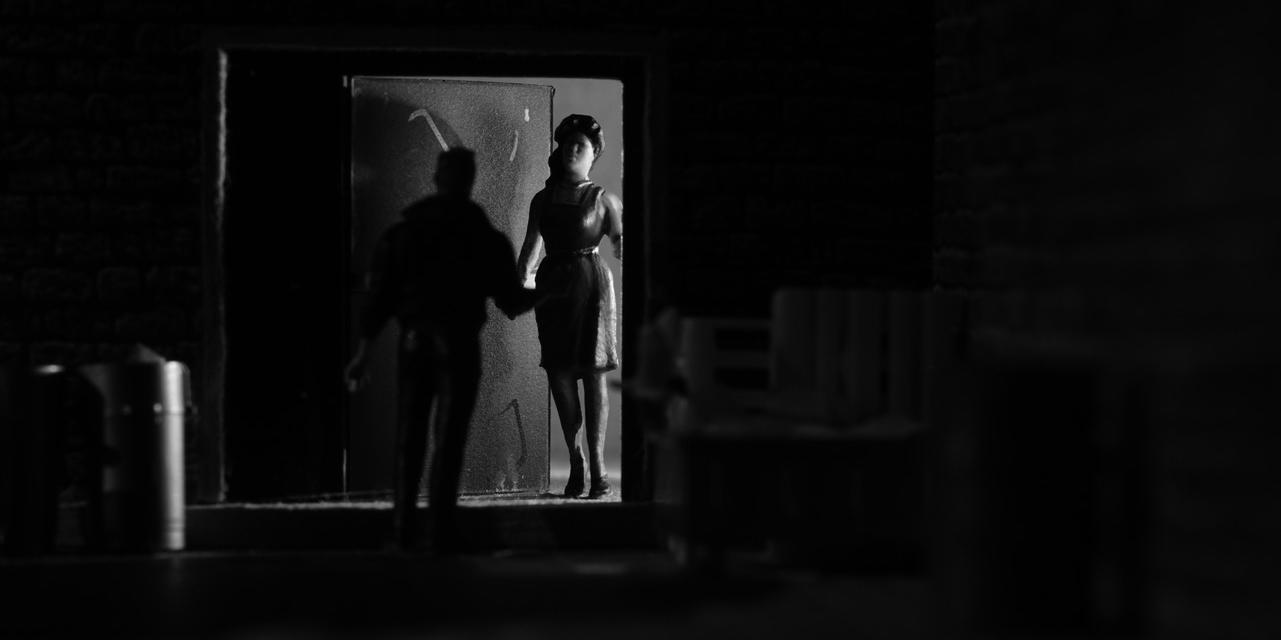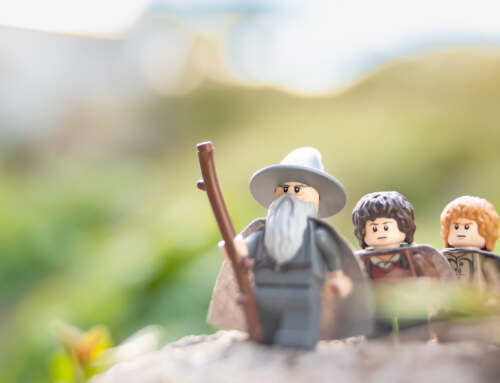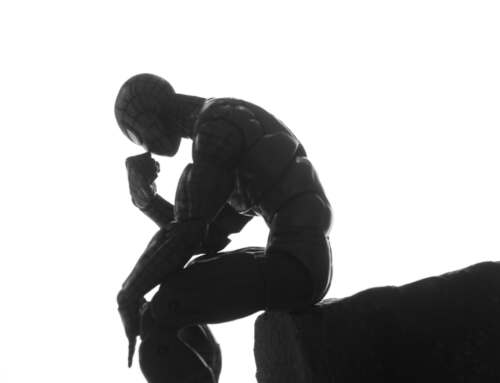As the old saying goes, there are no original stories. Perhaps that’s true—however, what is new and unique is the way in which a story is told. As toy photographers, we’re also storytellers. The toys might be our characters, but we, the photographers, create and tell these stories through our images, just as authors and narrators might. But the relationship between story and image might be as confounding as the chicken and egg question: Which comes first? Story and then images to match? Or images and a story created to fit?
In this episode of the Toy Photographers Podcast, I welcomes back Tobias Schiel (check out Episode 81 for another interview with Tobias, “It’s Not About the Toys”) for a conversation about storytelling. If you’re a follower of the Toy Photographers blog, you should be familiar with Tobias’s work and his noir-inspired six-image narratives. Tobias published his first set of images on the blog back in 2017, and in this conversation, we zero in on storytelling and the way Tobias’s stories—and photography—have evolved over the past five years.
Listen to hear more about:
- What attracts Tobias to the six-image narrative format (spoiler alert: six isn’t his ideal number of images!)
- How Tobias moves from one image to three or from four to six, and the power of details to add to the stories
- How he builds and plans each story
- Where inspiration for the story and images comes from
- How he sees himself, the photographer, in the stories: Is he a minor character? An omniscient narrator? The hero?
- How Tobias sees building sets, designing lighting and bringing the photographic vision to life make up his creative and artistic process
- What it means to focus on “picture first”
- Tobias’s style and how he feels it has changed from the start of his artistic journey
- The role of rules (e.g., Pixar’s 22 Rules of Storytelling or Joseph Campbell’s hero’s journey archetype) in developing one’s own style
- Tobias’s advice for anyone interested in diving into six-image narratives (spoiler alert 2: if you’re thinking you need to do a lot of planning, prewriting and storyboarding, think again!)
Recommendations from Tobias
Are you looking for a little storytelling inspiration? Then look no further than these recommendations from Tobias. Ranging from how-to books, to amazing graphic novelists—you will find something for every taste on these lists. Feel free to leave your own recommendations in the comments. We want to know what inspires you!
Books
- How to write a Mystery by Larry Beinhart
- The Castle of Crossed Destinies by Italo Calvino
- Understanding Comics: The Invisible Art by Scott McCloud
Comic Artists
Inspiring Authors
Resources mentioned in the episode:
- The Dusseldorf School of Photography (also known as the Becher School)
- Pixar’s 22 Rules of Storytelling
- Joseph Campbell
- Understanding Comics
I’d love to hear your thoughts after listening to my chat with Tobias: What does your approach to storytelling through your photography look like? Where do you find inspiration? Do you have an ideal number of images when you think about your own storytelling arc? Leave a comment below or join our communities on MeWe, Facebook, or Instagram!







It’s a wonderful converation of beautiful minds. THANK YOU.
I’m really surprised that the image comes first! Your stories are so coherent and mysterious that I thought they’re the effect of the meticulous plan written out into six image narrative[s]. Forgive me frankness but this “organic” method does not match the image of You I have created based on your works and meet-ups 😉
But I really understand and enjoy this method.
Thanks also for mentioning Mikhail Bakhtin [I have to re-read his works, never thought it might be useful in toy photography ;)] and other books and resources!
Thank You Shelly, thank You Tobias!
P.S.
“drinking breakfast”. that was a little gem of this conversation 😉
Thanks for your thoughtful comment, Tomasz!
Your words kind of stopped me in my tracks because I am never too sure I describe my process correctly. So did I get it all wrong? Meticulous, yes! I can guess where that came from: When I build a scene, I do so meticulously, and I also pay some attention to continuity. And while I kind of like planning my buildings, I abhor planning sequences.
And of course the stories are mysteious – they are mysteries to me, too! Fortunately I feel I need not explain how my detective finds out who did it or how he catches the bad guys.
The links between the pictures (or groups of pictures) are very loose … while each shorter sequence seems to be quite tightly knit, wich is something that mainly happened on the viual level. Just to give an example for the latter: I usually pay a lot of attention to the place where the action happens, so that time and place constitute a continuum.
Hope I am not babbling / lecturing!
Cheers!
And as we talk about coherence, and cause we talked about the page on which I test my pictures – I decided to make it public: https://empireoflights.com/bright-lights-black-city/ – this is still a work in progress.